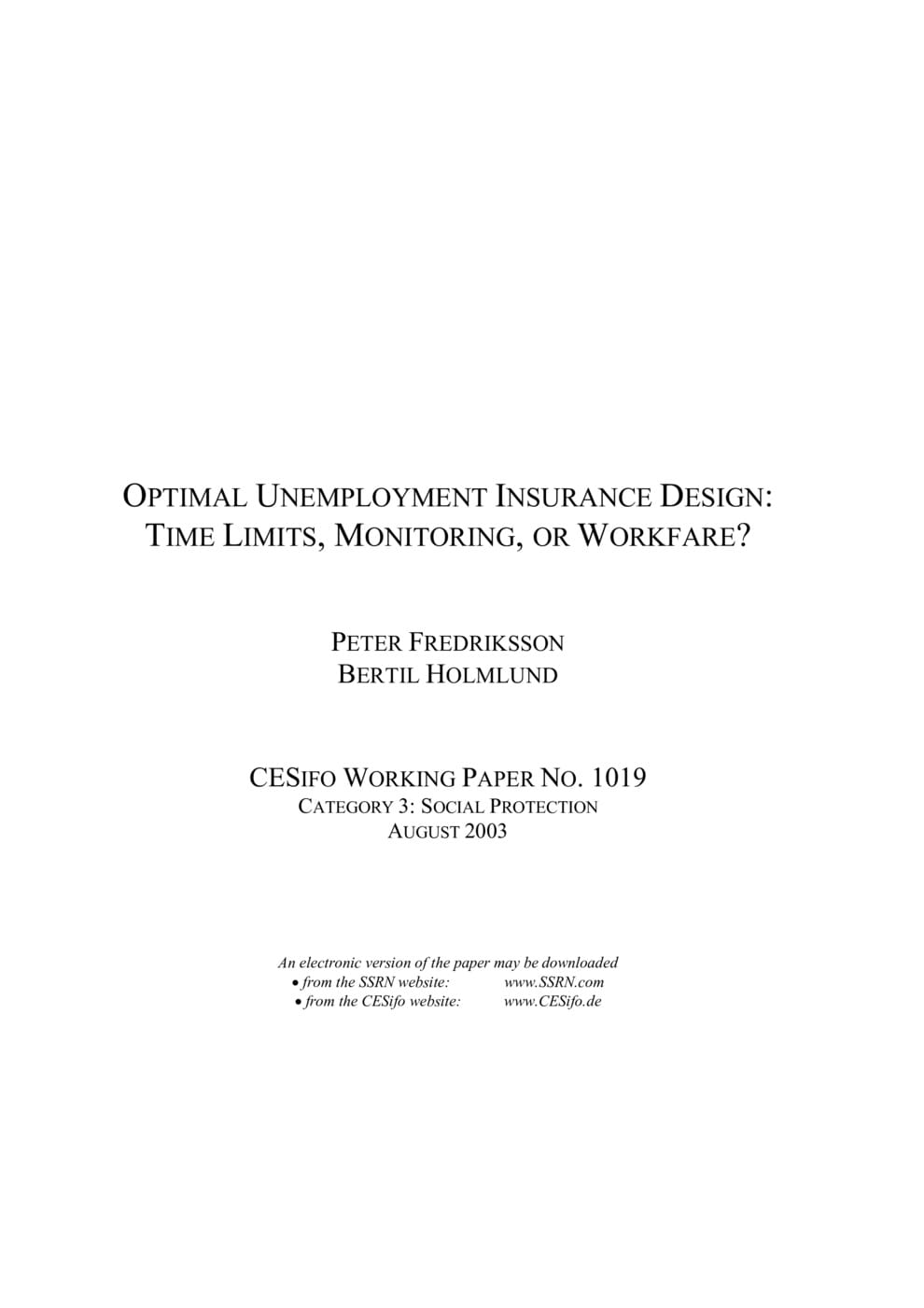Optimal Unemployment Insurance Design: Time Limits, Monitoring, or Workfare?
CESifo, Munich, 2003
CESifo Working Paper No. 1019

This paper analyses crucial design features of unemployment insurance (UI) policies. We examine three different means of improving the efficiency of UI: the duration of benefit payments, monitoring in conjunction with sanctions, and workfare. To that end we develop a quantitative model of equilibrium unemployment. The model features worker heterogeneity, which takes the form of differences in preferences for leisure. All the instruments are ways of limiting the duration of UI benefit receipt and the model can be used to compare them in a coherent fashion. The analysis suggests that a system with monitoring and sanctions restores search incentives most effectively, since it brings additional incentives to search actively so as to avoid the sanction. Therefore, the UI provider can offer a more generous UI replacement rate in a system with monitoring and sanctions than in the other two systems. Workfare appears to be inferior to the other two systems.